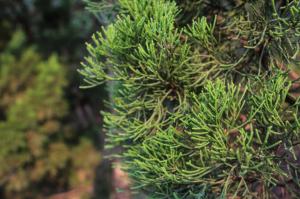Why Are Tomato Seedling Plant Leaves Turning Yellow?
Tomatoes are one of the most popular vegetables grown in gardens around the world. However, as with any plant, they can often suffer from various problems, including yellowing of their leaves. This can be frustrating for gardeners who want to grow healthy and productive tomato plants. In this article, we will explore some of the reasons why tomato seedling plant leaves may turn yellow and what you can do about it.
1. Lack of Nutrients
One of the most common reasons for yellowing of tomato plant leaves is a lack of nutrients. Tomatoes require a range of nutrients to grow healthy, including nitrogen, phosphorus, and potassium. Without these essential nutrients, the plant’s leaves may become yellow, stunted, and start to die off.
If you notice that your tomato plant leaves are turning yellow, you may need to adjust the amount of nutrients you are providing to the plant. One effective way to do this is to apply a balanced fertilizer that contains all of the necessary plant nutrients. Alternatively, you can add organic matter, such as compost or manure, to the soil to improve the soil’s nutrient content.
2. Overwatering
Another common cause of yellowing tomato plant leaves is overwatering. When plants are overwatered, their roots become waterlogged, which can prevent the plant from absorbing essential nutrients from the soil. This can lead to yellowing of the leaves and other symptoms, such as wilting and root rot.
If you suspect that overwatering is the cause of yellowing tomato plant leaves, you should reduce the amount of water you are giving to the plants. You should also ensure that the soil is well-draining and that any excess water can drain away from the plant’s roots.
3. Pest Infestations
A pest infestation can also cause yellowing of tomato plant leaves. Common pests that can damage tomato plants include aphids, whiteflies, and spider mites. These insects feed on the plant’s leaves and can cause yellowing, curling, and other symptoms.
If you notice signs of pest infestation on your tomato plants, you should take action to control the problem. This may involve applying an insecticide to the plants or using natural methods like releasing beneficial insects into your garden to control the pests.
4. Soil Acidity
The pH level of the soil can also affect the health of tomato plants. If the soil is too acidic, it can prevent the plant from absorbing nutrients, which can lead to yellowing leaves. Tomatoes prefer a slightly acidic soil with a pH between 6.0-7.0.
If you suspect that soil acidity is causing yellowing of your tomato plant leaves, you can adjust the pH level of your soil by adding lime or sulfur to the soil. This should be done carefully, as adding too much lime or sulfur can damage the plant’s roots.
5. Disease
Finally, yellowing of tomato plant leaves can be a sign of disease. Common diseases that affect tomato plants include tomato yellow leaf curl virus, early blight, and late blight. These diseases can cause yellowing, browning, and wilting of the plant’s leaves, as well as stunted growth.
If you suspect that disease is the cause of yellowing tomato plant leaves, you should remove and dispose of any affected plant material to prevent the disease from spreading to other plants. You should also seek the advice of a professional gardener or horticulturist for treatment options.
Conclusion
In conclusion, yellowing of tomato seedling plant leaves can be caused by a range of factors, including a lack of nutrients, overwatering, pest infestations, soil acidity, and disease. By identifying the cause of yellowing, you can take action to prevent further damage to your tomato plants and ensure that they grow healthy and productive.

 how many times do yo...
how many times do yo... how many planted tre...
how many planted tre... how many pine trees ...
how many pine trees ... how many pecan trees...
how many pecan trees... how many plants comp...
how many plants comp... how many plants can ...
how many plants can ... how many plants and ...
how many plants and ... how many pepper plan...
how many pepper plan...





























